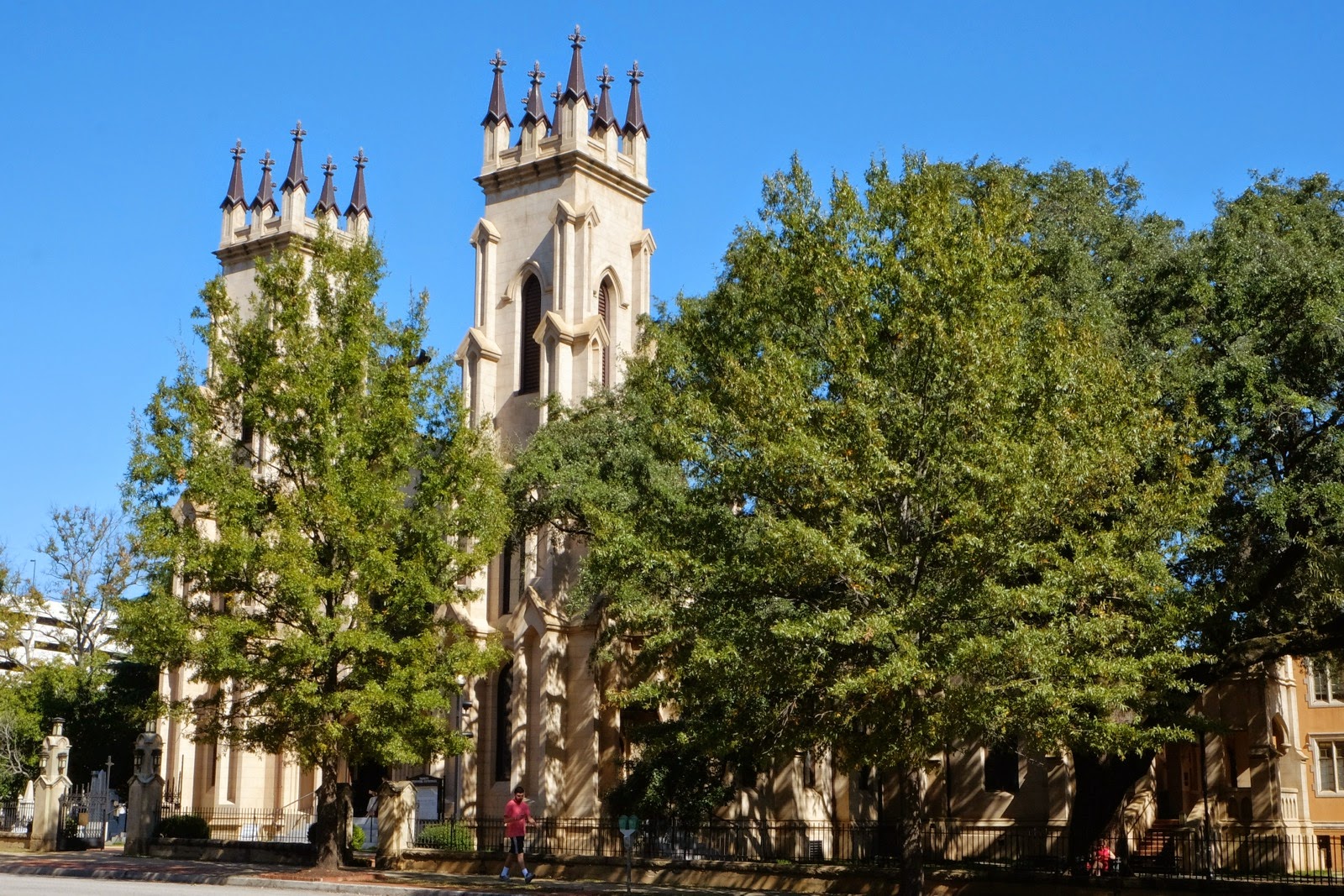While Atlanta was burned by General Sherman's Union troops during their "March to the Sea", Savannah was spared from destruction. It was instead given to President Lincoln as a Christmas gift including several hundred cotton bales. Lincoln accepted; the cotton bales probably tipped the scales.
Savannah is Georgia's oldest city and was established in 1733 to create a protective territory for the Carolinas, located between Florida (Spanish) and Louisiana (French). It became a flourishing port with shipping cotton, tobacco and other goods. Thanks to the Historic Savannah Foundation - launched by seven women in 1955 -, Savannah's charm now attracts several million visitors each year. My favorite part of downtown is the Victorian Historic District:
Savannah is also setting for novels (for example "Midnight in the Garden of Good and Evil" by John Berendt) and many movies, such as "Something to talk about" with Julia Roberts and "Forrest Gump". Tom Hanks' "park bench" scene, which opens the film was produced on Chippewa Square. According to the tour guide, the original bench got vandalized 15 years ago and removed.
Savannah's Historic District is one of the largest - or as claimed by the tour guide - "the" largest of its kind in the U.S.
 |
| Temple Mickve Israel, third-oldest synagogue in America |
 |
| Break time |
Sometimes, my sneaky picture taking does not remain unrecognized.
On my way back to the hotel I talked to a black gentleman who grew up in Savannah. In his opinion, the city has not necessarily developed to its best the last couple of years. People have become crazier and a lot more selfish. Isn't this the typical process of our urban society? When ask for his opinion about the current government, he only shook his head and expressed his disappointment.
He was one of the many who could not quite believe that I am doing this journey just by myself. We both agreed that the most important is to follow ones gut feeling when it comes to shady situations.
Happy Halloween to y'all!
More to come.




























































